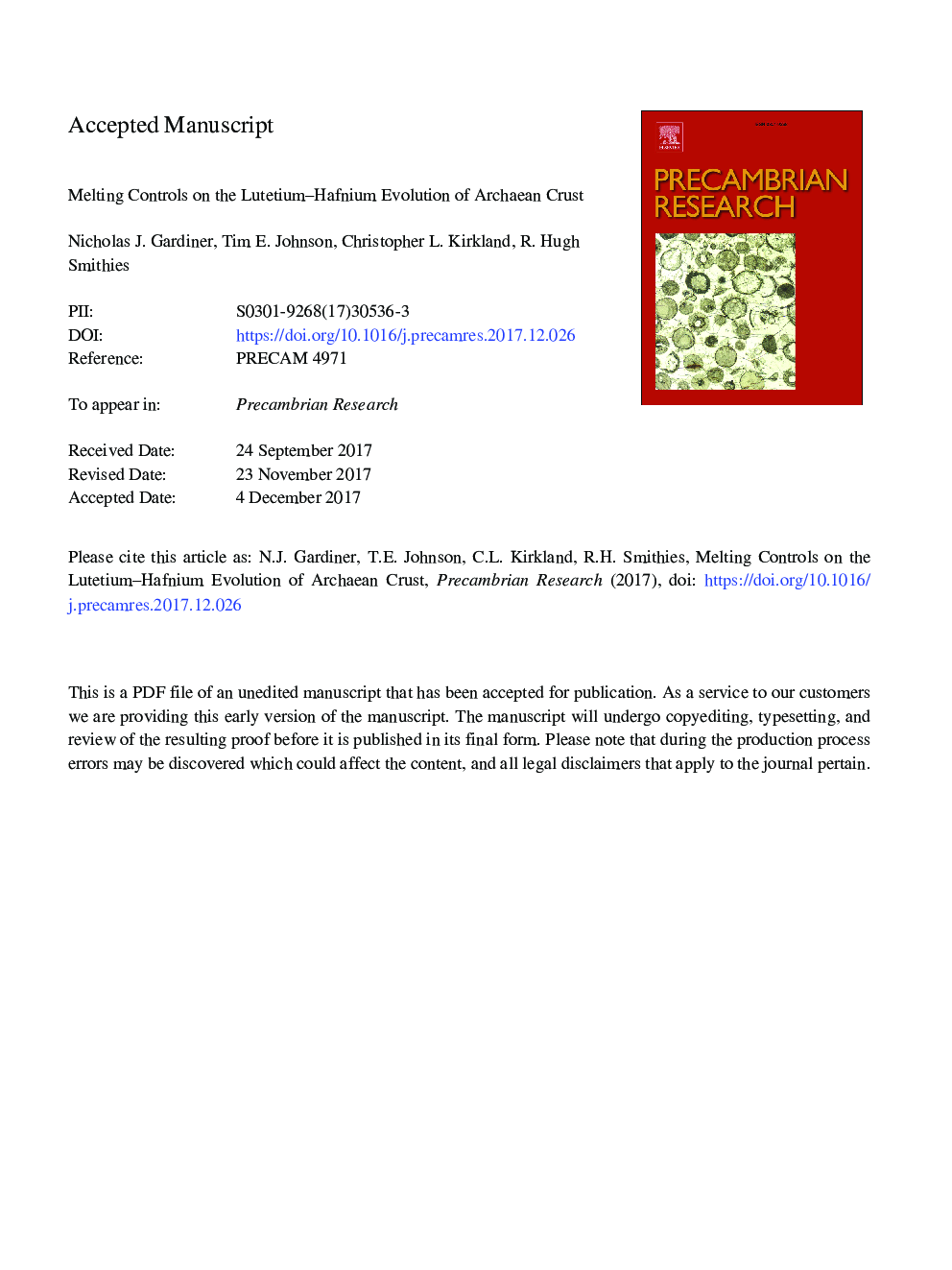| Article ID | Journal | Published Year | Pages | File Type |
|---|---|---|---|---|
| 8912681 | Precambrian Research | 2018 | 42 Pages |
Abstract
Using an approach combining phase equilibria, and trace element and isotopic modelling, we quantify the effects of partial melting of both a modern (N-MORB) and Archaean (C-F2) mafic source on melt Lu/Hf. Melting N-MORB shows that the 176Lu/177Hf of the melt, which modelling predicts to be between 0.015 and 0.022, is sensitive to the degree of melting. This difference results in a variation of 4.5 epsilon units/billion years. By contrast, anatexis of C-F2 yields melts with 176Lu/177Hf â¼0.009 that are less affected by the degree of melting. Remelting TTG yields K-rich granitic melts (TTGâ¯+â¯G) with 176Lu/177Hf â¼0.005. Thus, a partial melting event imposes a greater control on the resulting crustal reservoir Lu/Hf than the degree of melting. Archaean continental crust has a lower Lu/Hf than that of the average mid to upper continental crust, and therefore a lower 176Lu/177Hf (here 0.005-0.009) is appropriate to modelling its Hf isotopic evolution. There has been a secular change in average crustal Lu/Hf, with the median Lu/Hf of Proterozoic and Phanerozoic magmatic rocks being higher than that of Archaean TTGâ¯+â¯G. We show that an enriched Archaean mafic source (C-F2) with a Lu/Hf ratio of â¼0.12 may produce TTG continental crust with a 176Lu/177Hf approaching that calculated in real rocks worldwide.
Related Topics
Physical Sciences and Engineering
Earth and Planetary Sciences
Geochemistry and Petrology
Authors
Nicholas J. Gardiner, Tim E. Johnson, Christopher L. Kirkland, R. Hugh Smithies,
